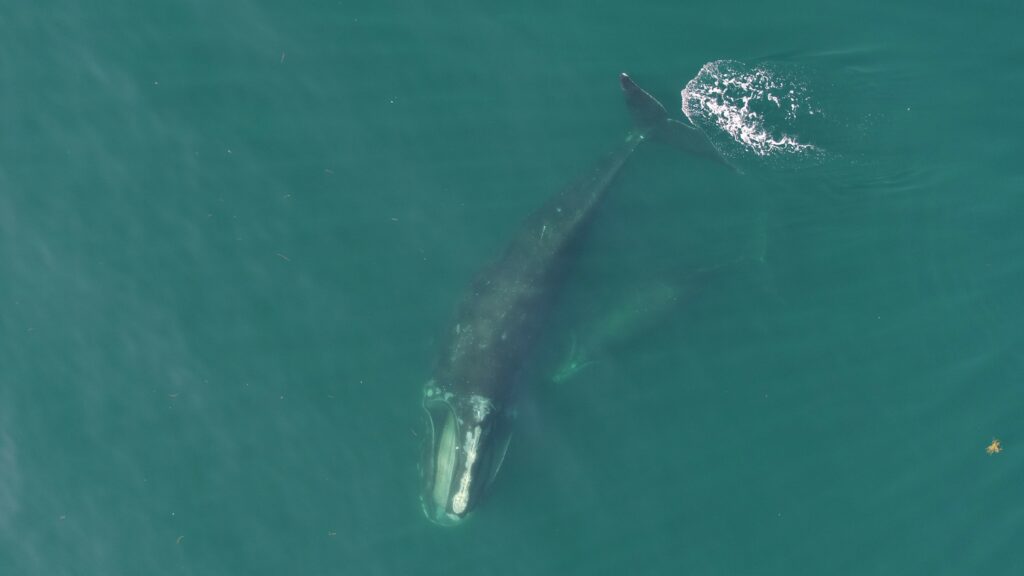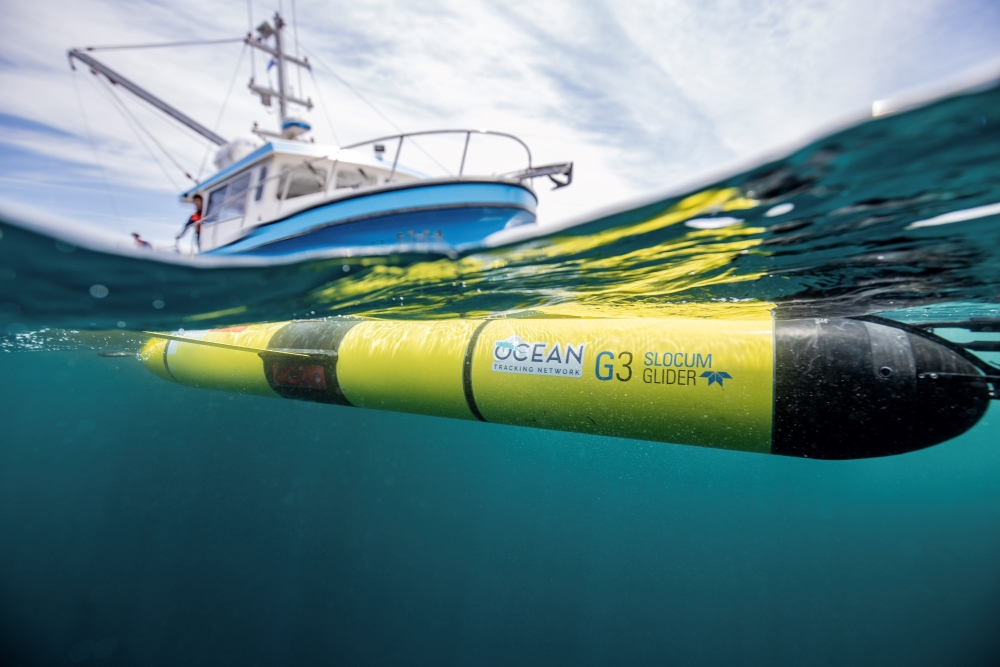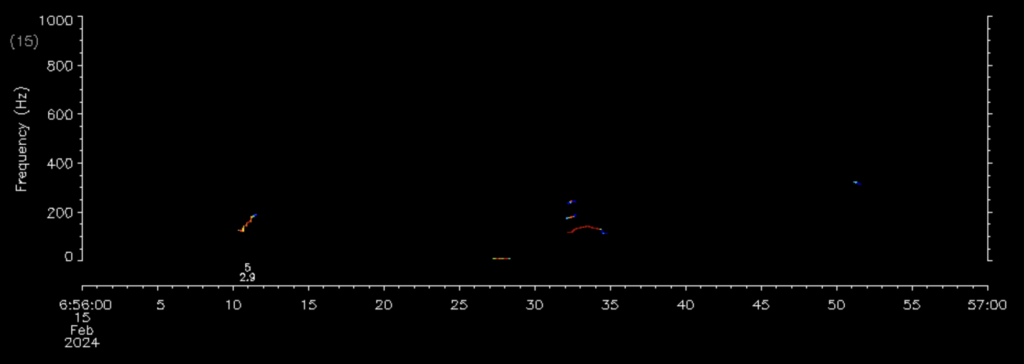The accelerating pace of climate change is affecting the behaviour of right whales, an endangered species, as they go in search of food and encounter old threats in new places.

In 2017, 12 right whales were found dead in the Gulf of St. Lawrence which connects the Great Lakes to the Atlantic Ocean via the St. Lawrence River. As the Gulf was an area not previously used much by right whales, the deaths took scientists by surprise. That year, five right whales were also found dead in US waters.
Up until then, scientists could confidently predict seasonal right whale movement. Whales would head from the southern US to southern Nova Scotia, into the Bay of Fundy, turn around and go back. In 2016, this all began to change as up to 50% of the estimated right whale population started going into the Gulf of St. Lawrence.
Right whales mainly eat energy dense, high lipid copepods. It’s estimated that they need around 2,000 pounds of these and other tiny marine organisms every day. Scientists believe that the right whales’ move into the Gulf of St. Lawrence was caused by a shift in their primary food source caused by climate change
In the period between 2017-2019, a total of 30 right whales died, mainly by becoming entangled in fishing gear or being struck by ships. Since scientists estimate that only a third of right whales that die are found and the total global population is only 360, with 70 breeding females, 21 deaths in the Gulf of St. Lawrence was a big dent in the population.
Canadian government responds swiftly
Apart from concern for the whales themselves, there was an important economic consideration for the Canadian government.
Canada exports around $3.2 billion dollars worth of seafood to US markets. These could be blocked by the US government if Canada didn’t provide equivalent protection to right whales to what the US does in its territorial waters under the Endangered Species Act.
To reduce or eliminate the risks to the whales, scientists need to know where, when and why they are in the Gulf. They turned rapidly to acoustic tracking and real-time aerial surveys.

Canadian and US glider networks
Today, glider networks in Canada and the US monitor right whales and alert shipping about their presence, sharing information as the whales migrate from one country’s coastal waters to another.
The Canadian network at Dalhousie University consists of 14 buoyancy driven Slocum electric gliders that can dive up to 1000 meters, be out at sea for two or three months and when equipped to monitor for whales pick up whale calls from up to 12 kms away. Gliders mostly operate on the Scotian Shelf, the Gulf of Saint Lawrence and the Labrador Sea area. They are operated by the Ocean Tracking Network (OTN), the global aquatic research, data management and partnership platform headquartered at Dalhousie University in Halifax, Nova Scotia. OTN is part of the Underwater Gliders Group and the GOOS OceanGliders network. OTN’s whale missions are done at the behest of Transport Canada, with Dr. Kim Davies of the University of New Brunswick Saint John campus as the science lead.
OTN’s Executive Director Fred Whoriskey is also one of the founders of the AniBOS animal sensor network.
The tracking software and DMON hydrophone system, a passive acoustic instrument that is capable of recording and processing audio in realtime, used by the Canadian gliders was designed by Mark Baumgartner, senior scientist and marine ecologist in the Biology Department at Woods Hole Oceanographic Institution (WHOI). Baumgartner describes himself as a ‘right whale guy and a technology guy’.
How the software developed
The science engineering department at WHOI built Baumgartner an acoustic recorder. In 2005, he did his first acoustic recordings of right whales from gliders and published a paper on this. In the late 2000’s, Baumgartner and WHOI engineers teamed up to put his whale detection software on a new instrument, called the digital acoustic monitoring (DMON) instrument that could detect and classify whale sounds in real time. Since then, Baumgartner and his team have focused on integrating the DMON into various autonomous platforms, including gliders and putting it into operation as widely as possible.
For example, whale detections from DMON instruments on gliders and buoys help to power ‘citizen science’ Whale Alert app which offers mariners and members of the public details of whale safety zones and enables them to help reduce whale ship strikes. They are also incorporated into Canada’s Whale Insight, a map that displays North Atlantic right whale detections dating back to May 2017.
The DMON has been used to study other marine mammals off the US and Canadian east coasts as well as the coasts of Alaska, California and Chile, including humpback, fin, sei, blue, bowhead and killer whales as well as walrus and various species of ice seals.
Apart from the Canadian fleet and others from the University of Maine, Stony Brook University, Rutgers University, Skidaway Institute of Oceanography, and the University of Alaska Fairbanks, Baumgartner’s software and the DMON instrument is used by his own five-glider fleet that mostly operates in New England waters off the coast of Maine, New Hampshire, Massachusetts and Connecticut with the support of the Northeastern Regional Association of Coastal Ocean Observing Systems (NERACOOS) and NOAA’s Northeast Fisheries Science Center.

Image supplied by Mark F Baumgartner
How the software works
Baumgartner’s tracking software sifts through the audio data collected by the glider in real time. When it thinks it recognises a whale call, a tonal sound, the glider sends information about that sound home when it surfaces roughly every four hours.
‘We then have an analyst go through detection information called “pitch tracks”,’ Baumgartner says. ‘They read them exactly the way a musician reads sheet music to identify the sounds the whales are making. All whales make sounds that are characteristic of and unique to their species so the analyst can identify which is a right whale call, which is a fin whale and so on. With a human in the loop, the false detection rate is basically zero.’
When Baumgartner’s analysts detect right whales, they share the information with the Canadian and US governments who act on it, enabling shipping to avoid right whales in real time.
Transport Canada, which provides funding for Whoriskey’s gliders, puts out a bulletin instructing vessels over 13 metres in the Gulf of St. Lawrence to slow down. Transport Canada can also close down fisheries if right whales are detected. In US coastal waters, the voluntary National Ocean and Atmospheric Administration (NOAA) Slow Zones for Right Whales programme asks mariners to slow down to 10 knots or avoid areas where right whales have been detected.
In the US, in the period between November 2021 and September 2022, Baumgartner’s network monitored for 2,458 days in US waters with gliders and buoys equipped with the whale detection system. Right whales were detected on 1,196 occasions over 228 days, which triggered 46 NOAA Slow Zone for Right Whales.
Climate change and the future for right whales
Now that climate change is happening more quickly, the real-time aspect of the right whale monitoring initiative embraced by Canada and the US is proving extremely valuable.
As Baumgartner says, ‘We’re seeing changes in the Gulf of Maine we weren’t seeing five years ago. If we want to understand really rapid change and how it influences the behaviour of marine life such as right whales and respond in the right way, real-time monitoring allows us to react quickly. If they move to places where we don’t have protection measures from vessel strikes and fishing gear entanglement, we can put those in place immediately.’
Whoriskey adds, ‘This is both the scariest and most fulfilling work I have done in my career. The consequences of not protecting these whales are desperate, and the fact that reported mortalities have dropped to zero in the Gulf of St. Lawrence since the whole right whale monitoring program was initiated brings me great hope.’
For GOOS, the work of Baumgartner and Whoriskey’s glider networks is an exciting step forward. As Joanna Post, Director of the GOOS Management Team says, ‘Ocean observation is an imperative for risk reduction not just for humans but for the protection of species and ocean ecosystems. This is an exciting example of the value of ocean observing leading to behaviour change that is valuable for the planet and all of us.’
